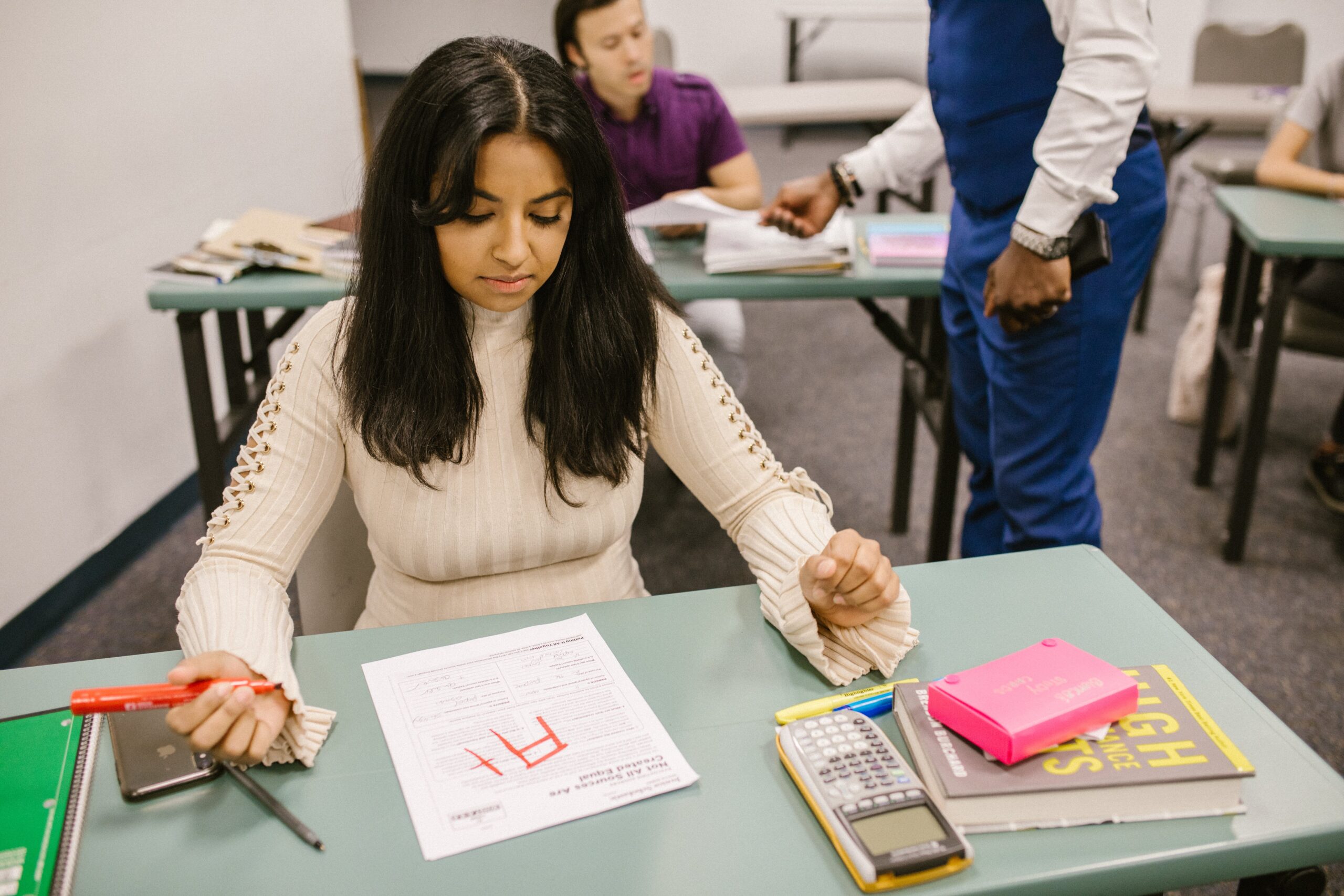While the purpose of a school system is to educate and empower individuals, there are unfortunate scenarios where certain practices and policies can contribute to the creation of a broken educational framework. In this exploration, we will delve into the characteristics and strategies that, when implemented, can result in an absolutely broken school system.
It’s crucial to examine these aspects not to perpetuate such a system but to understand the pitfalls and work towards meaningful reforms that prioritize the well-being and development of students.
1. Overemphasis on Standardized Testing
One of the surefire ways to create a broken school system is to place an overwhelming emphasis on standardized testing. When schools prioritize test scores over holistic learning experiences, it can lead to a narrow and rigid curriculum that revolves around teaching to the test.
Standardized testing, while providing a snapshot of academic performance, fails to capture the full range of a student’s abilities, creativity, and critical thinking skills. An overreliance on these tests can stifle teachers’ ability to nurture a love for learning and discourage students who may excel in areas not measured by standardized assessments.
In a broken school system, the pressure to perform well on tests may lead to a culture of stress and anxiety among students, promoting a mindset that values memorization over genuine understanding and application of knowledge.
2. Insufficient Funding and Resource Allocation
Another key factor in creating a broken school system is the inadequate allocation of funds and resources. When schools face chronic underfunding, it impacts the quality of education provided, leading to outdated textbooks, crumbling infrastructure, and limited access to essential resources.
Insufficient funding can result in larger class sizes, making it challenging for teachers to provide individualized attention to students.
Additionally, the lack of resources may hinder the implementation of extracurricular activities, cutting-edge technology, and other enriching experiences that contribute to a well-rounded education.
In a broken school system, the disparities in funding among schools can widen existing social and economic inequalities, perpetuating a cycle where students in underfunded schools face greater challenges in achieving academic success.
3. Rigid and Outdated Curriculum
A rigid and outdated curriculum is a hallmark of a broken school system. When schools cling to outdated teaching methods and fail to adapt to the evolving needs of the modern world, students are ill-prepared for the challenges and opportunities they will encounter in their future careers.
A curriculum that lacks relevance and fails to incorporate real-world applications of knowledge can lead to disengaged students who struggle to see the practical value of their education. Subjects that are not adapted to the changing demands of the workforce may leave graduates unprepared for the dynamic nature of contemporary professions.
In a broken school system, the resistance to curriculum innovation can hinder the development of essential skills such as critical thinking, problem-solving, and adaptability.
4. Neglect of Student Well-being and Mental Health
A school system is unequivocally broken when it neglects the well-being and mental health of its students. The intense focus on academic achievement at the expense of holistic development can contribute to a toxic environment where students feel overwhelmed, stressed, and unsupported.
Neglecting mental health in schools may lead to higher rates of anxiety, depression, and burnout among students. In such an environment, the pursuit of high grades becomes a primary concern, overshadowing the importance of emotional and social development.
A broken school system dismisses the importance of creating a supportive and nurturing environment where students feel valued, heard, and equipped with the tools to navigate the complexities of adolescence.
5. Lack of Diversity and Inclusion
A school system becomes broken when it fails to prioritize diversity and inclusion. When curricula, teaching staff, and educational materials lack representation and fail to reflect the experiences of a diverse student body, it perpetuates systemic inequalities.
A lack of diversity in the curriculum can lead to a narrow understanding of history, culture, and societal issues. Students from marginalized communities may feel overlooked and excluded, contributing to a sense of disconnection from the educational process.
In a broken school system, the absence of inclusive practices can hinder the development of empathy, cultural competence, and a broader perspective essential for success in an interconnected and diverse world.
6. Inflexible Teacher Evaluation Systems
Teacher evaluation systems that are rigid and fail to consider the complex dynamics of the classroom contribute to a broken school system. When assessments focus solely on standardized test scores or other quantitative measures, they may not accurately reflect the impact of a teacher on students’ overall development.
In a broken system, teachers may feel pressured to “teach to the test” rather than fostering a dynamic and engaging learning environment. The emphasis on narrow metrics can discourage innovative teaching methods and deter educators from taking creative approaches to cater to diverse learning styles.
An effective teacher evaluation system should consider a comprehensive set of factors, including student engagement, classroom environment, and the ability to inspire critical thinking.
7. Resistance to Technology Integration
In the digital age, a school system becomes broken when it resists the integration of technology into the learning process. Failing to leverage technology for educational purposes can leave students ill-prepared for a world that increasingly relies on digital tools and platforms.
Resistance to technology integration may result in a lack of digital literacy skills among students, hindering their ability to navigate an information-driven society. Additionally, it may limit access to online resources, collaborative platforms, and innovative teaching methods that can enhance the learning experience.
In a broken school system, the reluctance to embrace technology perpetuates a digital divide, where some students have access to cutting-edge tools while others are left behind.
Strategies for Reform School System
Recognizing the characteristics of a broken school system is the first step towards meaningful reform. To address these issues and create an educational system that empowers students for success, several strategies can be considered:
1. Shift Towards Holistic Assessment
Move away from an exclusive focus on standardized testing as the primary measure of student and teacher success. Implement holistic assessment methods that consider a range of factors, including project-based assessments, portfolios, and teacher evaluations based on a comprehensive set of criteria.
2. Advocate for Equitable Funding
Advocate for equitable funding across schools to ensure that every student has access to quality education, regardless of their geographical location or socioeconomic background. Push for policies that prioritize resource allocation based on the needs of individual schools.
3. Promote a Relevant and Adaptive Curriculum
Encourage the development and implementation of a relevant and adaptive curriculum that prepares students for the challenges and opportunities of the modern world. Incorporate real-world applications of knowledge, technology integration, and a focus on critical thinking and problem-solving skills.
4. Prioritize Student Well-being and Mental Health
Prioritize student well-being and mental health by implementing support systems, counseling services, and creating a positive school culture. Foster environments that encourage open communication, reduce stigma around mental health issues, and prioritize the holistic development of students.
5. Embrace Diversity and Inclusion
Promote diversity and inclusion in all aspects of education, including curricula, teaching staff, and extracurricular activities. Ensure that educational materials reflect the experiences of a diverse student body, fostering an inclusive learning environment.
6. Implement Comprehensive Teacher Evaluation Systems
Develop comprehensive teacher evaluation systems that consider a broad range of factors, including student engagement, classroom environment, and the ability to foster critical thinking. Provide professional development opportunities that support teachers in adopting innovative and effective teaching methods.
7. Integrate Technology Effectively
Embrace technology as a tool for enhancing the learning experience rather than resisting its integration. Provide training and resources for teachers to effectively use technology in the classroom, ensuring that students are equipped with essential digital literacy skills.
Conclusion
Creating a broken school system is not an intentional goal, but rather a consequence of systemic flaws, outdated practices, and a failure to adapt to the evolving needs of students and the world. Recognizing the characteristics of a broken system is the first step towards meaningful reform.
By prioritizing holistic assessment methods, advocating for equitable funding, promoting a relevant and adaptive curriculum, prioritizing student well-being and mental health, embracing diversity and inclusion, implementing comprehensive teacher evaluation systems, and integrating technology effectively, we can work towards a more inclusive, supportive, and empowering educational system.
Education is a powerful tool for shaping the future, and by addressing the shortcomings of the current system, we can create an environment that fosters the development of well-rounded, critical-thinking individuals prepared for success in the real world.




